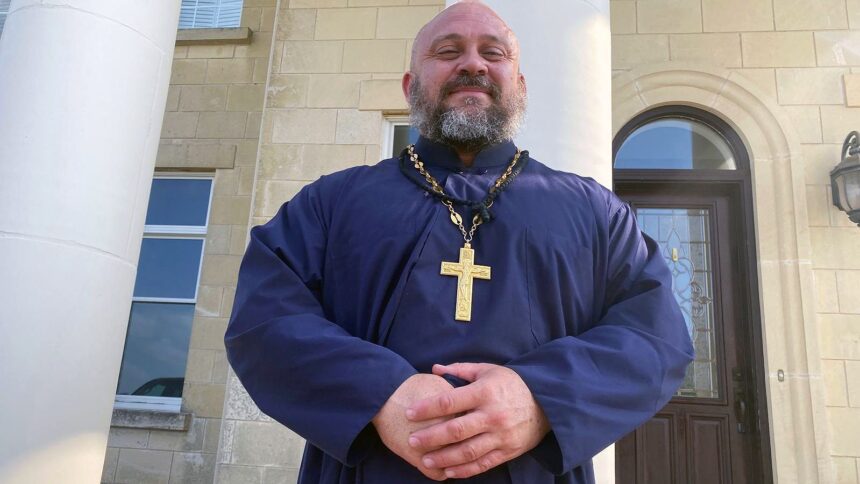The Rise of ‘Masculine’ Orthodox Christianity Among Young American Men
In a remarkable turn of events, young American men are increasingly turning to the Russian Orthodox Church Outside Russia (ROCOR), drawn by messages promoting a robust, unapologetic concept of masculinity. Father Moses McPherson, a priest leading a burgeoning congregation in Georgetown, Texas, has noted that his parish has tripled its size in just 18 months. With a strong online presence, Father Moses engages viewers by discussing topics related to masculinity, often criticizing modern behaviors such as wearing skinny jeans or crossing legs as contrary to traditional male norms.
Once a roofer and raised in a Protestant household, McPherson now celebrates a growing community that emphasizes traditional values. His congregation has embraced more than 75 individuals, many of whom are young men seeking meaning in a world they perceive as increasingly dismissive of their aspirations. “People are waking up to the fact that Orthodoxy is not just a secret; it’s something profoundly enriching,” he shares.
A New Generation Seeks Restoration
The congregation reflects a broader trend of young men searching for stability and purpose. Software engineer Theodore, who describes a period of emotional emptiness despite having a successful career and a loving partner, expresses a sentiment felt by many converts. “Society has created unrealistic expectations for men,” he laments, indicating that traditional roles are often portrayed negatively in contemporary discourse.
Much of this new enthusiasm stems from a collective disillusionment with mainstream ideals, leading many in the community to embrace homeschooling for their children. “We view it as a protective measure,” says Archpriest John Whiteford, emphasizing that this approach shields children from external influences like discussions surrounding gender identity.
| Group | Percentage Male | Year |
|---|---|---|
| Orthodox Christians | 64% | 2021 |
| Orthodox Christians | 46% | 2007 |
Despite only making up about one percent of the U.S. population, Orthodox Christianity is making waves, especially among a demographic eager for traditional structure. Interest has surged since the pandemic, with many young men connecting their faith to a deeper sense of identity and community. Professor Scott Kenworthy notes that increased attendance and engagement in his Cincinnati-based OCA parish reflects a nationwide trend of converting males seeking meaningful connections through faith.
Social Media’s Role in Faith Exploration
The digital landscape has played a pivotal role in this movement. Father Moses commands a sizable online following, where his posts resonate with those longing for a return to traditional values. His arguments against modern societal norms, including attitudes toward family planning, are striking a chord. He openly discourages contraception and promotes large families, citing a historical precedent within the church.
This attraction to conservative values extends beyond theological considerations. Buck Johnson, a firefighter and podcaster, expresses a newfound clarity in his faith journey, feeling welcomed into the church community despite his tattoos, which often symbolize a more rebellious lifestyle. He and others view the Russian Orthodox Church as a repository of enduring traditions in a world that seems to churn out transient ideals.
As these young men resonate more with the ideals promoted by ROCOR, they find comfort and community in a faith framework they believe provides a necessary counterbalance to contemporary secularism. With a growing congregation and fervent online discussions, the future of this movement appears promising, signaling a reshaping of religious identity among American youth. The pilgrimage towards a more masculine faith experience is indeed gaining momentum, creating ripples across the fabric of contemporary Christianity.




